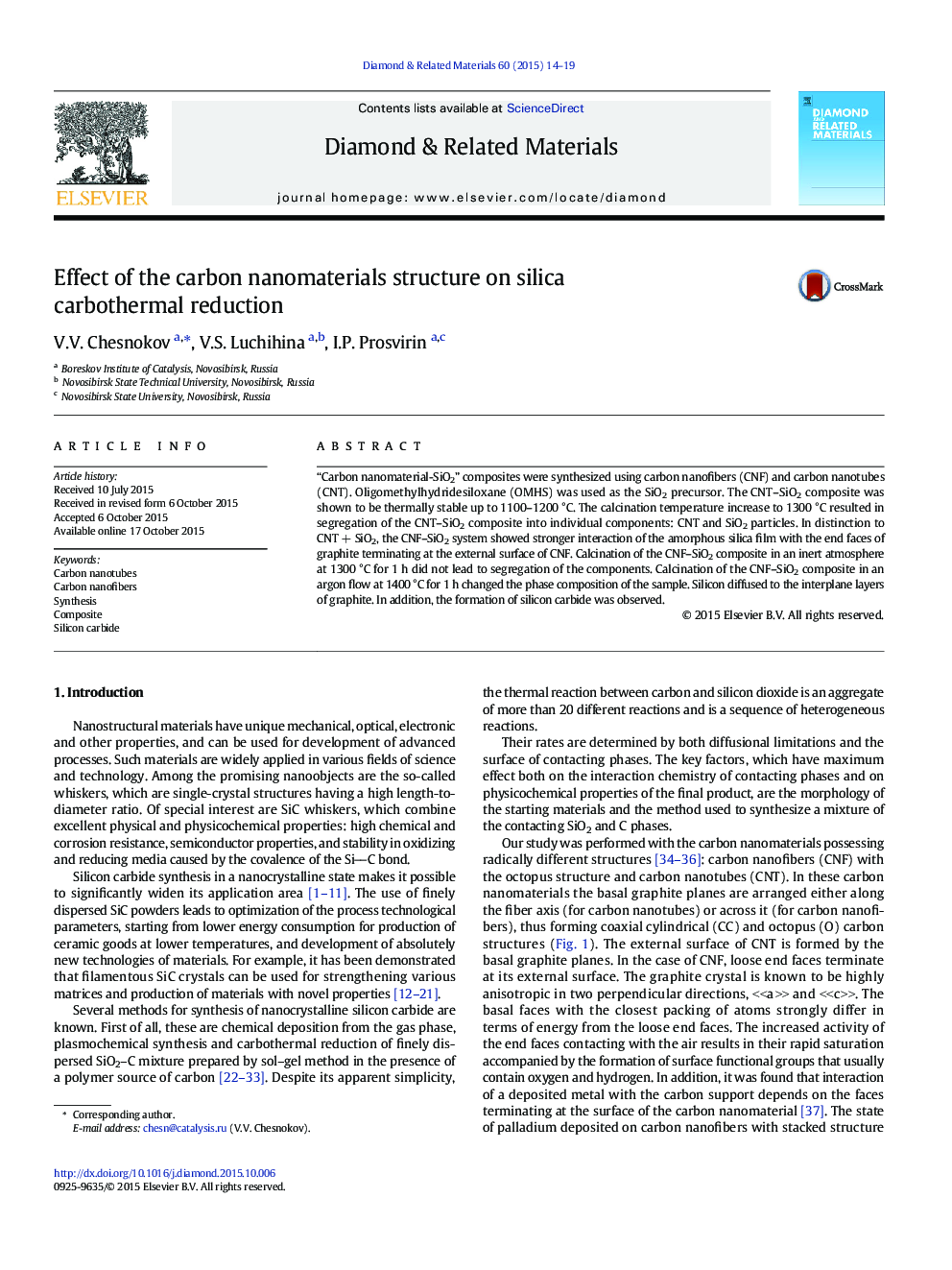| کد مقاله | کد نشریه | سال انتشار | مقاله انگلیسی | نسخه تمام متن |
|---|---|---|---|---|
| 701801 | 1460771 | 2015 | 6 صفحه PDF | دانلود رایگان |
• New method for the synthesis of the CNT–SiO2 composite has been developed.
• Morphology of carbon nanomaterial affects the carbothermal reduction.
• Calcination of CNT–SiO2 composite at 1300 °C leads to segregation of the composite.
• Calcination of CNF–SiO2 composite at 1300 °C results in formation of SiC whiskers.
“Carbon nanomaterial-SiO2” composites were synthesized using carbon nanofibers (CNF) and carbon nanotubes (CNT). Oligomethylhydridesiloxane (OMHS) was used as the SiO2 precursor. The CNT–SiO2 composite was shown to be thermally stable up to 1100–1200 °C. The calcination temperature increase to 1300 °C resulted in segregation of the CNT–SiO2 composite into individual components: CNT and SiO2 particles. In distinction to CNT + SiO2, the CNF–SiO2 system showed stronger interaction of the amorphous silica film with the end faces of graphite terminating at the external surface of CNF. Calcination of the CNF–SiO2 composite in an inert atmosphere at 1300 °C for 1 h did not lead to segregation of the components. Calcination of the CNF–SiO2 composite in an argon flow at 1400 °C for 1 h changed the phase composition of the sample. Silicon diffused to the interplane layers of graphite. In addition, the formation of silicon carbide was observed.
Figure optionsDownload as PowerPoint slide
Journal: Diamond and Related Materials - Volume 60, November 2015, Pages 14–19
